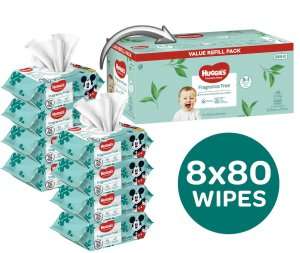Babies
A beautiful blend of joy, love, and a wealth of practical knowledge is required to begin the incredible journey of caring for your baby. As your small beloved newborn changes into a functioning pilgrim, excelling at child care becomes principal. In this comprehensive guide, you’ll learn how to navigate the day-to-day complexities of baby care and create a loving, safe environment for your precious bundle of joy.

Feeding and Nutrition
Breastfeeding or Formula Feeding
Positioning for Comfort
Try experimenting with various breastfeeding positions, such as the cradle hold or football hold, to ensure a secure and comfortable latch during sessions. These positions not only make you feel better but also help you and your baby have a good time feeding. Finding a position that feels natural and allows for a good latch, thereby maximizing milk transfer, is the objective.
Techniques for Bottle Feeding
A helpful method for bottle feeding is to hold the bottle at a slight angle. This not just keeps air from entering the container, diminishing the gamble of gas and inconvenience for your child, yet it likewise empowers a characteristic sucking movement. Try different things with various container shapes and areola sizes to find the one that your child likes, guaranteeing a smooth and charming taking care of involvement.
Importance of Burping
Make sure to gently pat your baby’s back after each feeding to let out any air that may have been swallowed. Colic and discomfort can be significantly reduced with this essential yet simple practice. Find the best burping position for your baby by experimenting with various positions like sitting upright or over the shoulder.
Introduction of Solid Foods

Slow and Steady
Present new food varieties continuously, permitting your child’s stomach related framework to adjust and limiting the gamble of sensitivities or responsive qualities. Begin with single-fixing purees, like crushed bananas or yams, and see how your child answers prior to consolidating extra food sources.
Progressive Textures
Introduce soft solids gradually as your baby becomes accustomed to purees. Introduce soft fruits, vegetables, or cooked pasta in bite-sized pieces to encourage chewing and improve motor skills. Be patient and attentive to your infant’s cues because each baby develops at their own pace.
Patience is Key
Either skepticism or excitement can accompany the introduction of new flavors. Be aware that your baby’s preferences are perfectly normal and that adjusting to new foods may take several tries. Be patient, provide a variety of healthy choices, and let your baby discover and learn about their preferences over time.
Sleeping Habits
Establishing a Bedtime Routine
Consistency for Security
Making a reliable sleep time routine isn’t just valuable for laying out solid rest designs yet additionally gives a feeling that everything is good to your child. Consolidate quieting exercises, like a hot shower, delicate cradlesongs, or a sleep time story, to flag the methodology of rest. Consistency is critical, as it assists your child with perceiving the prompts that sleep time is close, elevating a smoother progress to rest.
Optimal Sleep Environment
To ensure that your baby’s sleeping environment is conducive to sound sleep, pay close attention to it. Keep the room faintly lit, keep an agreeable room temperature, and put resources into a quality bunk bedding for ideal help. You can improve your baby’s quality of sleep and overall well-being by creating a cozy and inviting sleeping area.
Responsive Settling
Even though there are many different ways to train your baby to sleep, it’s important to listen to what your baby needs, especially in the beginning. Take care of your child instantly when they wake during the evening, giving solace and consolation. As your child creates self-relieving abilities, progressively support more free rest propensities while keeping a responsive and sustaining approach.
Naptime Tips
Recognition of Tiredness Cues
To avoid overstimulation and encourage healthy naptime routines, pay close attention to your baby’s signals of tiredness. Getting fussy, rubbing one’s eyes, or yawning are all signs that you need to get some sleep. By answering these signs immediately, you can help your child rest all the more calmly and diminish the probability of overtiredness.
Flexible Nap Schedule
While laying out a routine is valuable, be adaptable with your child’s rest timetable to oblige their regular rest designs. A few children might blossom with more limited, more regular rests, while others favor longer, united times of rest. Notice your child’s rest prompts and change the rest plan as needs be, taking into consideration a more custom-made and agreeable rest schedule.
Adherence to Safe Sleep Practices
Make safe sleeping habits a priority at both nap time and bedtime. Continuously put your child on their back to rest, utilize a solid sleeping pad with a fitted sheet, and try not to free bed or delicate toys in the den. By observing these rules, you establish a protected rest climate that diminishes the gamble of Unexpected Newborn child Demise Condition (SIDS) and advances a more secure rest insight for your child.
Hygiene and Diapering
Diaper Changing Basics
Preparedness
Readiness is the most vital move toward proficiency during diaper changes. Preceding beginning a diaper change, ensure that each and every fundamental stock, including diapers, wipes, and a distinction in pieces of clothing, are inside arm’s degree. This not only helps to break the cycle but also aids in maintaining your child’s acceptance and connection during the transition.
Gentle Cleaning Practices
During diaper changes, clean your child’s sensitive skin with hypoallergenic and aroma free wipes. Do a thorough yet sensitive cleaning technique, ensuring that you show up at all kinks and wrinkles. Consider wiping sensitive areas with a damp, soft cloth to ensure your baby’s comfort and hygiene.
Diaper Rash Prevention
While diaper rash is a common concern, effective preventative measures can help safeguard your child’s skin. Apply a diaper cream after each change to protect against moisture and irritants. Choose a cream that contains zinc oxide or petroleum jelly for increased efficacy. Reliably check for signs of redness or aggravation and address them immediately to thwart trouble.
Bathing Tips
Optimal Water Temperature
For a safe and enjoyable bath, it’s important to have a comfortable water temperature. Test the water with your elbow to make sure it is neither too hot nor too cold before putting your baby in the tub. Go for the gold, ordinarily around 98.6°F (37°C), to give a calming and pleasant washing experience for your little one.
Gentle Product Selection
Pick gentle and hypoallergenic child cleanser and cleanser to really focus on your child’s delicate skin. Search for items explicitly formed for newborn children, liberated from cruel synthetic substances and aromas. In the event that the product comes into contact with your baby’s eyes, you might want to use a formula that does not produce tears to lessen any discomfort.
Vigilance for Safety
Your baby should always be supervised during bath time, and safety measures should be taken. During the bath, ensure that your baby is securely held and that all of the necessary items are within arm’s reach. Never leave your child unattended in the shower, in any event, briefly, to forestall mishaps and guarantee a protected and pleasant washing experience.
Safety and Comfort
Baby-Proofing Your Home
Crawl-Level Exploration
To establish a protected climate for your investigating child, get down to their eye level and survey expected risks. Search for little articles, power plugs, and sharp corners that might present dangers. This involved methodology permits you to distinguish and address possible risks, guaranteeing a safe space for your little one to find and play.
Secure Furniture
To prevent tipping, fix heavy items like dressers and bookshelves to the wall. As your child turns out to be more portable and fires pulling up on furnishings, this insurance becomes fundamental to decrease the gamble of mishaps. Safely attach furniture utilizing anchors or sections, observing producer rules for establishment.
Outlet Covers and Safety Gates
Defend your child from electrical dangers by introducing outlet covers all through your home. These covers keep inquisitive fingers from getting to outlets and lessen the gamble of electrical wounds. Additionally, to create safe areas in your home, strategically position safety gates in areas to which your baby should not have access, such as staircases or rooms with potential dangers.
Choosing Safe Products
Non-Toxic Toys
Prioritize non-toxic and BPA-free toys when shopping for your baby’s playthings. Guarantee that toys are age-proper and liberated from little parts that could represent a stifling risk. To ensure a safe play environment, regularly inspect toys for wear and tear and replace any damaged items.
Baby-Friendly Laundry Detergents
Because your baby’s skin is so delicate, it’s important to use the right laundry detergents. Pick a gentle and hypoallergenic cleanser explicitly figured out for newborn children. Stay away from cleansing agents and unforgiving synthetics that might disturb your child’s skin. Washing child garments independently from the remainder of the clothing limits openness to possible allergens.
Mindful Monitoring
Assess the age appropriateness of toys and equipment on a regular basis as your child gets older. A few things might turn out to be less reasonable as your child grows new abilities and interests. Keep an eye on your baby’s developmental milestones and make adjustments to their surroundings to keep toys and other equipment safe and engaging.
Emotional Well-being
Bonding and Communication
Skin-to-Skin Contact
Encourage major areas of strength for a bond with your child through customary skin-to-skin contact. Whether during taking care of, nestle time, or naptime, the actual closeness upgrades the profound association among you and your little one. Your baby’s overall emotional well-being will benefit from this bonding experience, which provides comfort and security.
Frequent Communication
Take part in standard discussions with your child, regardless of whether they are too youthful to even consider answering with words. The rhythm and your manner of speaking are relieving and add to language advancement. Singing lullabies, talking to your baby during daily activities, and responding to his or her gurgles and coos are all easy but effective ways to improve communication and forge a strong bond between you and your child.
Prompt Response to Cues
Cries, facial expressions, and body language are all ways that infants communicate. Respond promptly to your baby’s needs and be attentive to their cues. Whether it’s yearning, distress, or the requirement for a diaper change, a responsive methodology fabricates trust and consoles your child that their necessities will be met, adding to a solid profound establishment.
Related Products :
what to buy for pregnant wife
list of things to buy when pregnant
when to buy a pregnancy pillow
what to buy in first trimester
new mom pregnancy gifts
what to buy for a pregnant woman
when to get a pregnancy pillow
what to buy for pregnant friend
Pregnancy Products
things to buy during pregnancy
what to buy a pregnant woman
what to buy when pregnant
things to buy for a pregnant woman
what to buy pregnant woman
things expectant mother should buy
pregnancy things to buy
pregnancy items to buy
what to buy first trimester
things to buy for pregnant wife
what to buy for pregnant lady
what to buy for a pregnant friend
what to buy first when pregnant
First things to buy when pregnant
what to buy for an expecting mother
when to buy a crib during pregnancy
what to buy someone who is pregnant
things to buy in first trimester
things to buy your pregnant wife
pregnant what to buy
things to buy pregnant woman
things to start buying when pregnant
pregnancy list of things to buy
gifts to buy pregnant wife
what to buy pregnant friend
things to buy when pregnant
pregnancy stuff to buy
what to buy when you find out you re pregnant
what to buy my pregnant wife
things to buy for pregnant ladies
Tips for Pregnant Women
Pregnancy Products
Your Pregnancy
First Pregnancy Advice
Pregnancy Tips for First-Time Moms
Pregnancy Care Tips
First-Time Pregnancy Tips
Early Pregnancy Care Tips
Early Pregnancy Tips
Pregnancy Help
Pregnancy Tips
Pregnancy Guide
Pregnancy Advice
Maternity Tips
Pregnancy Health Advice
Pregnancy Healthcare
Prenatal Help
Healthy Pregnancy Tips
Care Pregnancy
Pregnancy Tips and Advice
Pregnancy Guidance
Pregnancy Health Tips
Prenatal Advice
Pregnancy Take Care
Good Pregnancy
Prenatal Tips
Pregnancy Take Care Tips
Pregnancy Health Care Tips
healthy pregnancy tips
pregnancy advice
pregnancy health tips
early pregnancy advice
your pregnancy
first pregnancy advice
pregnancy tips for first time moms
first time pregnancy tips
early pregnancy care tips
early pregnancy tips















